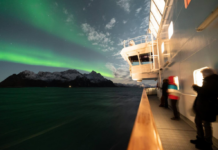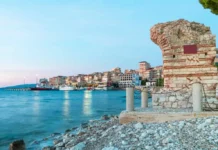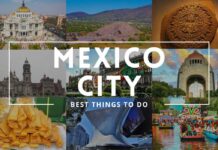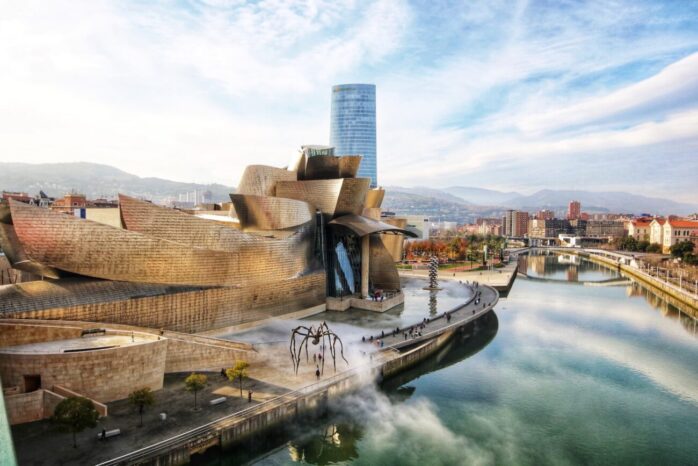
City in northern Spain, the largest port and industrial center of the country, Bilbao. Here it does not feel at all like the Spain that travelers are accustomed to. It is impressive in its size. Rather than being a small and cozy little town in Europe, it is a large industrial center with its charm. It is surrounded by mountains and lush greenery, which attracts tourists from all over the world. Here you will not see the ancient architecture, but in Bilbao, you can experience the beauty of modern art.
Interested and want to have your best Bilbao walking tour during the vacation? Then our guide can help you learn a little more about the city before you do.
Briefly about Bilbao
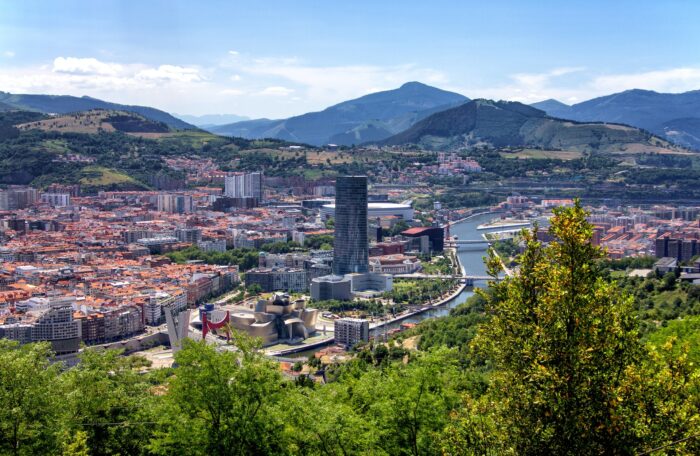
Due to its geographical location, Bilbao has been a center of trade since antiquity, which influenced the active construction and expansion of the city. War with France and internal conflicts in Spain harmed its development and architecture.
When the Second Carlist War (1873-1876) began, Bilbao served as a stronghold through which the British sent aid to the Spaniards. Fighting back against the onslaught of 20,000 Carlists, the locals did not allow Don Charles to take possession of the city and turn it into his residence. The area has survived many conflicts and to this day occupies an important place in the life of the country, being both an important seaport and an industrial center.
Nowadays it is a modern metropolis with skyscrapers and developed cultural life. Different moods prevail in the region than in Spain as a whole. Peace and cleanliness reign on the streets.
Population of Bilbao
The people of Bilbao love to party, as evidenced by the length of their festivals and holidays. In this, they are very similar to Spaniards, but in the rest, have significant differences.
Among these differences, we have identified the main three:
- Residents strongly reject talk about national identity, because they do not consider themselves Spaniards, and refer to the Basque.
- It is customary to speak the Basque language, which does not resemble any European language.
- The Basque people are very fond of sports, especially soccer.
Besides, the local population is always very friendly and hospitable to tourists.
The Climate of Bilbao
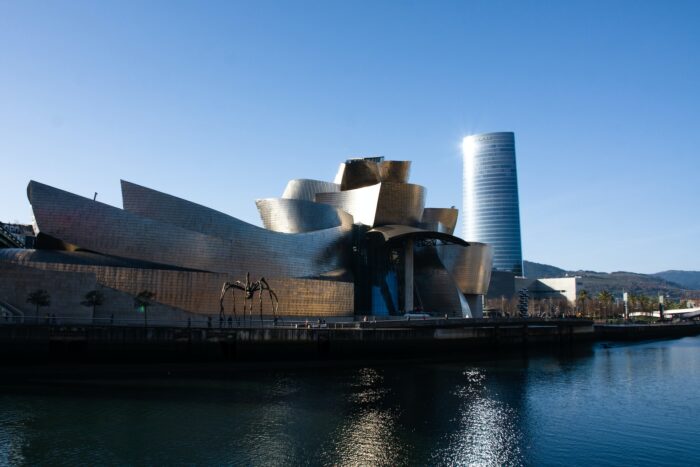
Bilbao has a temperate climate, so it is not hot in summer, but not minus temperatures in winter. In this case, the proximity to water and the surrounding mountains create a kind of greenhouse effect, so both in summer and winter here is quite humid, despite the lack of precipitation. If you like long walks, feel free to come to Bilbao from April to October.
Bilbao Neighborhoods
Bilbao’s urban structure was formed over centuries and began with the main street Ronda. Today this area is considered the Old City. Here are the main attractions: churches and monuments. The Abando district used to be an industrial area but has now been restored and made attractive for tourists. The main artery of the city is the Gran Via de Don Diego-Lopez de Aro. It crosses the entire city and is very easy to navigate on your own. Bilbao has a total of eight districts, each with its museums and attractions.
Sightseeing
If you like ancient architecture with centuries of history, then Bilbao will disappoint you a bit. It certainly has its chapel and ancient churches, but that’s not why you come to the capital of the Basque Country. Come here are fans of art houses, contemporary art, and unconventional approaches to architecture.
What to See in Bilbao First
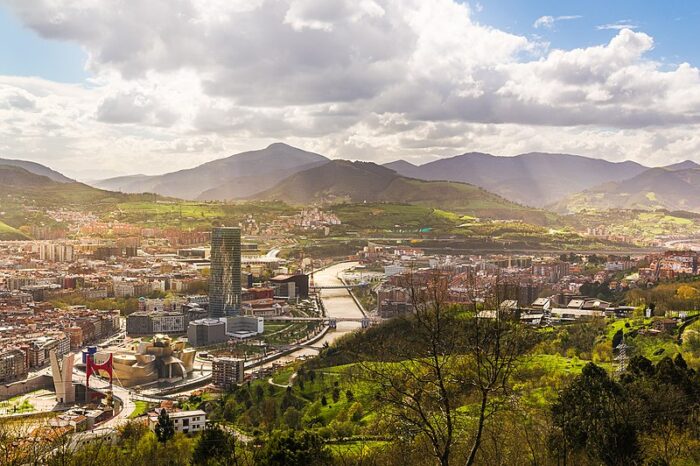
Planning to visit Bilbao on foot? At a minimum, plan 3 days just to get to know the city, and if you want to see its surroundings as well, it is better to allocate 7 days to see the most interesting things in this mysterious region.
For most travelers, Bilbao is associated with the Guggenheim Museum. Yes, the Museum of Modern Art is the locomotive of tourism in Bilbao, but it is by no means its only attraction. Bilbao is also the history, gastronomy, culture, traditions of the Basque Country, architecture, and vibrant nightlife.
Despite the urban evolution, the traditional culture of the town is still very much alive with old places of worship mixing with modern facilities.
Among the important attractions are:
- Guggenheim Museum
- Museum of Fine Arts
- Basque Museum
- Bilbao Maritime Museum
- The Old Quarter of Casco Viejo
- Cultural Center of Alondiga
- Museum of Archeology
- Basilica of Our Lady of Begonia
- Bilbao Cathedral
- The Seven Streets
- Park Doña Casilda de Iturrizar
- Museum of Athletic Football Club
- Place Nueva
- Campo Volantín Bridge
- Funicular de Arganda
- Cathedral of San Nicolas de Bari
- San Mamés Stadium
- Federico Moya Square
- Concordia Railway Station
- Museum of Bullfighting
- The Arriaga Theater
- Biscay Bridge
- Palace of Euskaldun
- University of Deusto
- Arenal Square
Sure, this is not a comprehensive list of locations, but the basic 25 that should be seen by everyone.
Interesting Facts
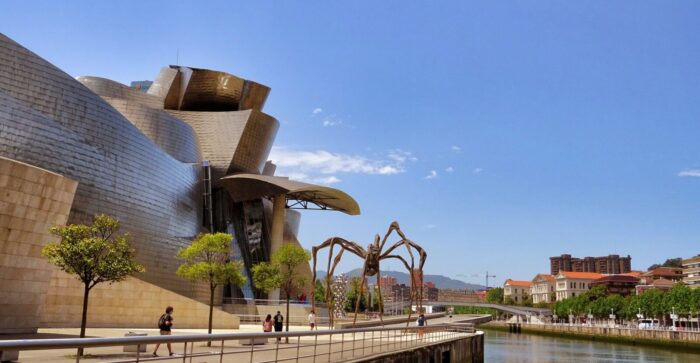
Every tourist will be interested to know the details that distinguish and set apart each city on the globe.
Here are some interesting notes about Bilbao:
- The Basque Country is not known for warm weather. Even in summer, it is cold and it rains a lot. The climate is mild, and humid, with no frost in winter, but warm clothes can always come in handy. The closer to the mountains, the colder and harsher the climate.
- Bilbao has 2 official languages: Spanish and Basque. Knowledge of English would be an advantage. In general, locals are welcoming and will help the tourist with everything.
- There are no direct flights to Bilbao, you can get here via Barcelona, Madrid, Frankfurt, Munich, Paris, Brussels, and Lisbon.
- When traveling by subway, keep your tickets until the end of the trip, because the pass works not only for entrance but also for the exit. The fare depends on the number of stations and the type of pass you choose.
Even though Bilbao is called a seaside city, there are no beaches in the city – there is only the promenade of the river Nervión.
So if you want to swim in the sea or sunbathe on a sandy beach, note that you have to leave Bilbao.
Something a Tourist Should Do in Bilbao
So what’s on the list of essentials?
So, you need:
1. Walk a lot on foot
Bilbao has a subway and surface transportation, but you can feel the charm of the city only on foot. This way you can visit all 7 ancient streets of the medieval quarter. The authentic architecture surprises with its doll-like balconies and the ancient churches with their beauty and variety of styles.
2. Stroll along the waterfront
Striking little houses that resemble Amsterdam and on the horizon are the mountains that seem to separate Bilbao from the rest of the world.
3. Visit the main museum of the world
The Guggenheim Museum is one of the reasons why tourists come to the Basque Country. There you will discover a world of bizarre modern art, which will not leave you indifferent and will give you a sea of inspiration.
4. Go shopping
The main stores are on Gran Via. There are Spanish little-known brands as well as global brands.
5. Go out of town to the suburb of Portuguesa
There is an incredible suspension bridge Puente Colgante Vizcaya and a promenade with picturesque views of the French Basque Country.
6. Taste the local cuisine
White wine Chacoli and pinches (appetizers of meat and seafood and other unusual combinations) are the minimum gourmet program.
The main areas of tourist interest in Bilbao can be reached on foot. And if you want to arrange the best tour for yourself and your friends, you can always pick up options from Freetour.com.
So, put on your comfortable shoes and arm yourself with the desire to explore this city in northern Spain.


